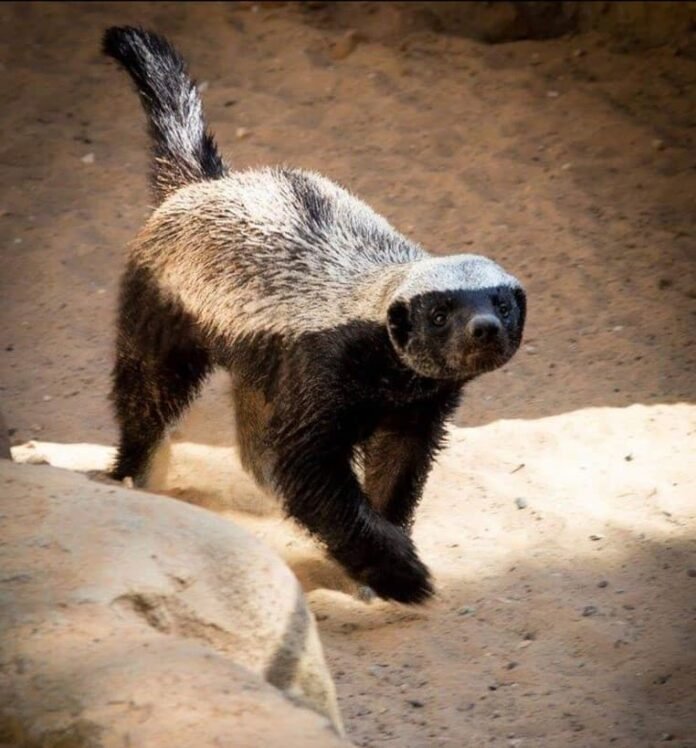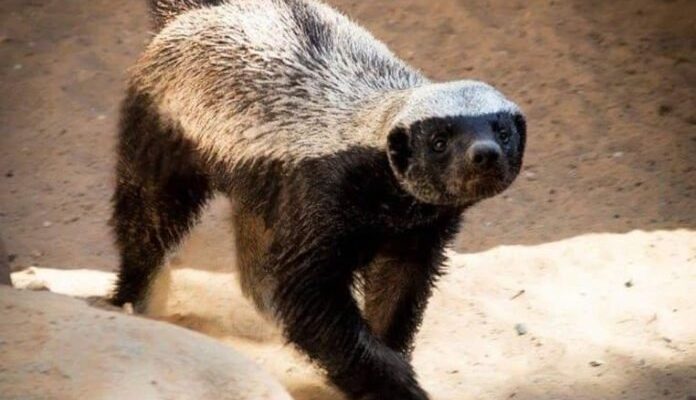
Imagine a tank of a creature, built for survival. Honey badgers are known for their tenacity and willingness to confront predators much larger than themselves. However, understanding their behavior towards humans requires diving a bit deeper. So, let’s take a closer look at what makes these animals both fascinating and potentially dangerous.
Understanding the Honey Badger’s Nature
Honey badgers are small but mighty. They belong to the weasel family and are native to Africa, Asia, and the Middle East. What’s intriguing about them is their fearless demeanor. They don’t back down easily, even from larger predators like lions or crocodiles. When faced with danger, they often choose to fight rather than flee.
Their tough skin—thick enough to withstand bites from snakes and other threats—adds to their rugged image. This resilience is part of what makes them dangerous; they have little fear, which can lead to confrontations with humans. You might think of it as a small dog barking ferociously at a bigger dog. The honey badger thinks it can take on the world, and that bravado can lead to issues.
Honey Badger Behavior and Human Interaction
Here’s the thing: honey badgers generally avoid humans. They prefer to keep their distance, choosing to scavenge and hunt in more secluded areas. However, if they feel cornered or threatened, they can be aggressive. Imagine you’re a honey badger, and suddenly, a human invades your space. Your instinct is to protect yourself.
Most human encounters with honey badgers happen in rural or wild areas, usually when people are hiking or camping. If a honey badger feels provoked, it might charge. Most of the time, they’ll run away, but if they’re agitated, their response could be to defend themselves. This instinct is a natural reaction, and it’s essential to understand.
What Makes Honey Badgers Aggressive?
There are a few factors that might trigger aggression in honey badgers:
- Defensive Behavior: Like any animal, honey badgers will defend their territory, especially if they have cubs.
- Surprising Encounters: Getting too close can startle them, causing them to react aggressively. Think of it as sneaking up on someone who’s focused on a task—they might jump!
- Food Protection: Honey badgers are known for stealing food. If they’re eating, they may not take kindly to interruptions.
Understanding these triggers can help prevent unwanted encounters. Being aware of their space and behavior can go a long way in keeping both honey badgers and humans safe.
Are Honey Badger Attacks Common?
Attacks on humans by honey badgers are relatively rare. Most people will go their whole lives without encountering one. But, anything is possible. There have been reports of honey badgers attacking people, usually when they feel threatened. For instance, a person might accidentally step too close, leading to a defensive reaction from the badger.
The important thing to note is that these creatures aren’t out hunting humans. They’re not like bears that might see humans as prey. Instead, honey badgers are more like a scared cat that hisses when it feels threatened. If left alone, they’ll happily go about their business.
Precautions When Encountering a Honey Badger
So, what should you do if you encounter a honey badger in the wild? Here are some essential tips:
- Keep Your Distance: If you see a honey badger, admire it from afar. They’re fascinating creatures, but they like their space.
- Avoid Cornering: Never try to corner or approach one. Just like any wild animal, they can become unpredictable.
- Don’t Feed Them: Feeding wild animals is a bad idea. It can lead to aggressive behavior in search of food.
Following these guidelines can help you enjoy the beauty of these wild creatures while ensuring everyone’s safety.
Why Honey Badgers Are More Than Just Dangerous
While it’s easy to focus solely on their potential danger, honey badgers play a crucial role in their ecosystems. They’re excellent pest controllers, eating snakes, insects, and even small mammals. Their fearless nature and adaptability make them invaluable in maintaining the balance of their habitats.
When you think about honey badgers, consider their incredible ability to take on challenges, not just their potential threat to humans. They symbolize resilience and courage, teaching us that sometimes, the smallest of creatures can pack the biggest punch.
In summary, honey badgers can be dangerous when they feel threatened, but attacks on humans are rare. Like any wild animal, they deserve our respect and caution. By understanding their behavior and keeping a safe distance, we can appreciate their fascinating nature without putting ourselves at risk. So, the next time you hear about a honey badger, remember: they’re tough little fighters, but they’re not out for human blood. Instead, they’re just trying to survive in their wild world.

